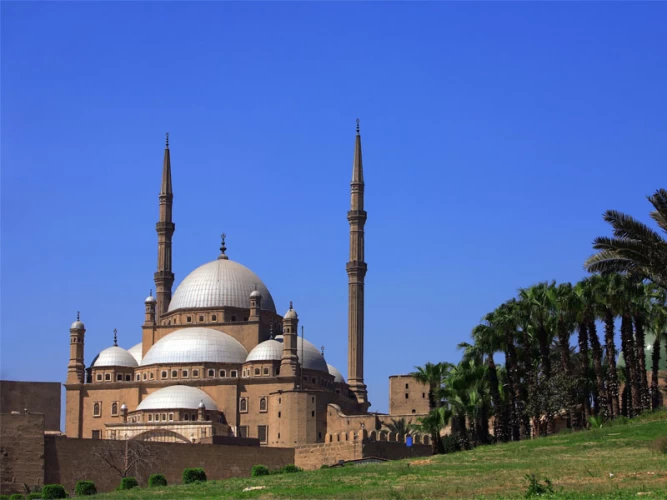
Bab AL-Nasr Gate
Bab al-Nasr in Islamic Cairo: it is a huge fortified stone gate built in the south of Bab al-Fotouh, constructed by the Fatimid military commander Gohar Al-saqli. The vizier Badr al-Jamali later called it Bab al-Ezz; however, the inhabitants of Cairo preferred the original name 'victory gate', which has remained in use to this day. Perhaps the reason for this adherence is that this door was the entrance gate for the victorious Egyptian armies, which is why the Egyptians preferred to use this name, as Egyptian Sultans such as Al-Zahir Baibars, al-Mansur Qalawun, Al-Ashraf Khalil, and Al-Nasser Qalawun passed through this door as prisoners of the enemies of Egypt.
The minister Badr al-Din al-Jamali has moved this door, as well as Bab al-Futuh, from their original places next to the judge's corner to their current places.
This door is considered one of the most important monuments of a military nature that remained in Egypt from the period when the Fatimids ruled Egypt. The gate is distinguished by the ornament on the wings and the fronts of the towers, which symbolizes the victory in the efforts of the campaigns to protect the city from the invaders. Between the wings of the gate there is a huge high door topped by an opening surrounded by a frieze that extends to surround the two towers of the door, inscribed with inscriptions mentioning the name of the one who built it (caliph Al-Mustansir and the Emir of armies Abu al-Najm Badr) and the date of construction. And above this cornice are the openings of the jambs. The gates have a stone staircase that reaches the roof of the gate. This staircase is considered the first of its kind in the history of architecture of this period, and this staircase leads to the towers, as well as leads to a group of rooms that contain the most important collection of stone contracts.
The commander of the French campaign in Egypt, Napoleon Bonaparte, named these towers of the northern wall after the French officers responsible for their security. These names are still carved near the top level of the gates.
The popular biography of King Al-Zahir Baibars mentions that this door was the gate through which Al-Zahir Baibars entered Cairo for the first time in his life.


















